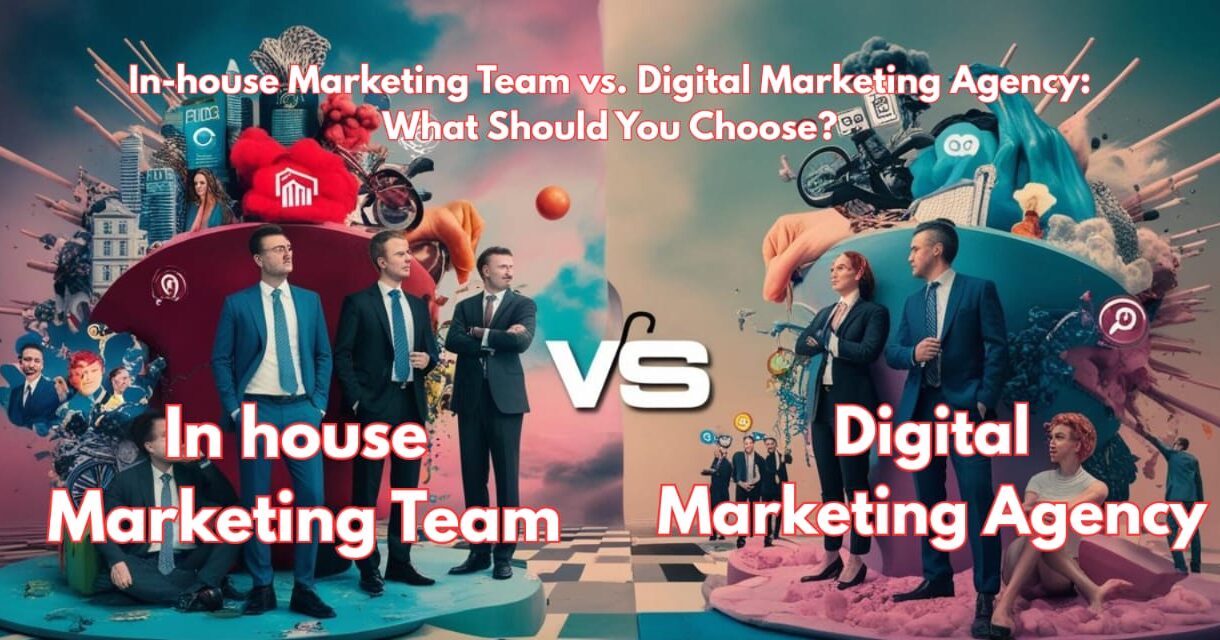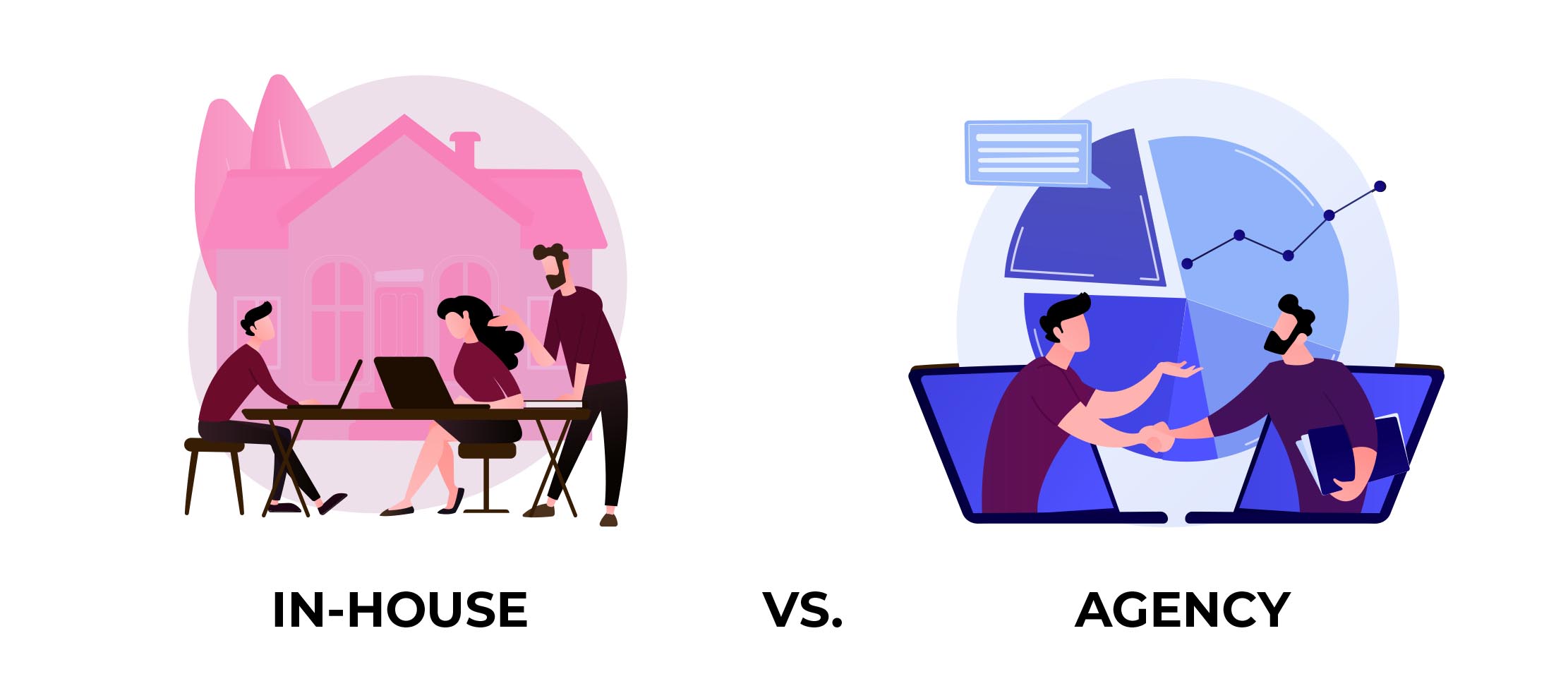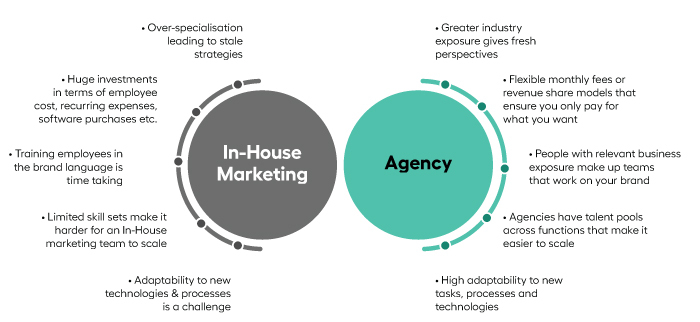
In today’s rapidly evolving Indian business landscape, the challenges faced by entrepreneurs and companies are far more complex than ever before. The year 2025 marks a time where change is not just constant—it’s exponential. Digital transformation is no longer a buzzword; it is a necessity. From bustling metro cities to emerging Tier 2 and Tier 3 hubs, businesses are navigating shifting consumer behaviors, intense online competition, rising digital advertising costs, and the ever-present pressure to stay relevant. The traditional methods of selling and brand-building are slowly becoming obsolete as customers now demand more value, authenticity, and personal connection. Whether it’s a family-run garment shop in Surat or a tech-driven SaaS startup in Bengaluru, every business is facing the urgent question: how do we grow, connect, and compete in a digital-first India?
Adding to the complexity is the explosion of channels—Instagram, YouTube, WhatsApp, Amazon, D2C websites, and influencer networks—all creating both opportunities and confusion. Many business owners feel overwhelmed, trying to manage ads, content, customer service, and branding all at once. Hiring talent is tough, especially with the demand for skilled marketers far outweighing supply. In this environment, choosing the right marketing approach becomes a make-or-break decision. Do you build an in-house team that lives and breathes your brand every day, or do you partner with an experienced digital marketing agency that brings speed, expertise, and scale? It’s not a simple decision, and there’s no one-size-fits-all answer. The truth is, the path to success lies in understanding your business deeply—its goals, resources, values, and long-term vision—and aligning your marketing strategy to solve the modern challenges of India’s new-age economy.
Table of Contents
Sr. Headings
1. Introduction: Solving Modern Challenges in Indian Business
2. Why Performance Marketing Alone Won’t Cut It
3. The Power of Growth Marketing and Influencers
4. Institutions Like OCP Academy: Empowering Businesses in 2025
5. Case Study: An Indian Retail Brand’s Journey
6. The Cost and Culture Fit Dilemma
7. Talent, Tools, and the Speed of Execution
8. reativity and Strategy: Where Magic Happens
9. Scalability and Flexibility: Key to Sustainable Growth
10. Full-Stack Marketing: A Game-Changer
11. Conclusion: Fuel Your Vision with the Right Choice
12. FAQ: Your Top Digital Marketing Questions Answered
Why Performance Marketing Alone Won't Cut It
Performance marketing—primarily through platforms like Google Ads, Facebook Ads, Instagram, and now even emerging Indian platforms—is often seen as the fastest way to generate leads and sales. And it’s true, to some extent. It delivers measurable results, allows you to scale campaigns based on budgets, and can target specific audiences with precision. For many Indian businesses, especially startups and D2C brands, this approach has been a lifeline in their early days. However, as the digital landscape becomes more saturated in 2025, performance marketing alone is no longer the magic bullet it once appeared to be.
The primary problem lies in the rising cost and decreasing effectiveness of these platforms. Click-through rates are declining, cost-per-click is increasing, and consumers have developed what’s often called “ad blindness”—they scroll past even the most well-designed ad creatives without a second thought. Additionally, with increased competition, even well-optimized ads struggle to maintain a consistent ROI over time. In this environment, putting all your marketing budget into paid ads is like building a house on rented land. You are always at the mercy of algorithms, auction prices, and platform policies that can change overnight.
Beyond the technical and financial concerns, there’s also the emotional and relational side of marketing to consider. Indian consumers today are smarter, more emotionally driven, and more community-oriented than ever before. They want to feel a connection with the brands they support. They want stories, values, authenticity, and a sense of belonging. Performance marketing, by nature, is transactional—it aims to convert. But to truly grow a brand in India’s diverse and deeply emotional market, you need strategies that go beyond the click. You need content that educates, entertains, and engages. You need social proof, reviews, user-generated content, and influencer credibility. You need emails that build relationships, WhatsApp marketing that feels personal, and SEO that brings in organic trust.
Moreover, performance marketing doesn’t nurture long-term customers. It’s focused on acquisition, not retention. But as seasoned Indian business owners know, retention is where profitability lies. Without a strong brand foundation, a valuable content strategy, and an excellent post-sale experience, all you’re doing is spending money to fill a leaky bucket.
In short, while performance marketing can definitely be part of your strategy, it cannot be the whole strategy. A full-funnel, holistic approach that combines growth marketing, content, organic outreach, and community building is essential. It’s like cooking a full Indian thali—ads might be your spicy chutney, but without the rice, dal, vegetables, and dessert, the meal is incomplete.


The Power of Growth Marketing and Influencers
Growth marketing and influencer collaboration have emerged as two of the most powerful forces shaping the future of digital success in India. Unlike traditional marketing, which often focuses only on top-of-the-funnel activities like awareness or bottom-of-the-funnel efforts like conversion, growth marketing takes a full-funnel approach. It looks at the entire customer journey—from the first impression to repeat purchase and beyond—optimizing every touchpoint with a blend of creativity, data, experimentation, and empathy. In 2025, Indian consumers don’t just want to buy products; they want to buy into a story, a value, and a community. Growth marketing is how brands create that experience. It combines A/B testing, customer feedback, content marketing, email automation, retargeting, and conversion optimization to not just attract users, but to retain them, delight them, and turn them into brand advocates. It’s the art of understanding human behavior with the science of data, and for Indian businesses looking to scale sustainably, it’s no longer optional—it’s essential.
Now add influencers into this equation, and the impact multiplies. India is a storytelling nation, and digital creators are today’s most trusted storytellers. From YouTube tech reviewers and Instagram fashion bloggers to regional content creators speaking in local languages, influencers have become the bridge between brands and their audiences. These creators are relatable, aspirational, and deeply trusted by their followers. When they recommend a product, it doesn’t feel like an ad—it feels like a personal suggestion from a friend. This trust is gold in a market as emotionally driven as India’s. Brands that harness the right influencers can tap into communities that would otherwise take years to build. Influencer marketing isn’t just about paying someone to post; it’s about strategic collaboration, storytelling, and co-creating value. When combined with growth marketing strategies, influencers help amplify brand reach, build social proof, and drive conversions in a way that feels authentic and human. In a time where digital noise is louder than ever, growth marketing and influencer partnerships allow Indian businesses to speak clearly, connect emotionally, and grow meaningfully.
Institutions Like OCP Academy: Empowering Businesses in 2025
In 2025, as the digital landscape continues to evolve at a breakneck pace, one of the biggest challenges facing Indian businesses is not just access to tools or platforms, but access to the right knowledge and talent. This is where institutions like OCP Academy are making a transformative impact. More than just a training institute, OCP Academy has emerged as a catalyst for empowering businesses, entrepreneurs, and marketers with the skills and strategic thinking needed to thrive in today’s digital-first world. In a market where algorithms change overnight and customer expectations rise by the day, having a well-trained team that understands the full spectrum of digital marketing—from SEO and analytics to storytelling and branding—is a competitive advantage. OCP Academy bridges the critical gap between textbook theory and real-world application. Their hands-on, industry-driven programs equip learners not just with technical know-how, but with the mindset needed to approach marketing as a dynamic, growth-oriented discipline.
For small and medium Indian enterprises, who often can’t afford top-tier agency retainers or hire large in-house teams, OCP Academy is proving to be a game-changer. By training existing staff or grooming a new generation of digital professionals, it helps businesses build internal capabilities that are agile, cost-effective, and deeply aligned with brand goals. Their curriculum emphasizes practical execution—whether it’s running A/B tests, launching influencer campaigns, writing compelling ad copy, or understanding customer behavior through data. They also focus on soft skills like communication, strategic thinking, and collaboration, which are essential for modern marketing leadership. In a time where digital skills are the currency of success, institutions like OCP Academy are not just educating—they are enabling transformation. For any Indian business serious about sustainable growth, investing in such training is not a luxury—it’s a necessity.
Case Study: An Indian Retail Brand's Journey
Let’s take the story of a mid-sized ethnic wear brand based in Jaipur. For years, their revenue came from footfalls in local stores. When COVID-19 hit, they hastily launched an online store and began running Facebook ads. Initial sales spiked, but soon plateaued. Frustrated, they decided to invest in a digital agency known for full-stack growth strategies. The agency redefined their customer personas, leveraged regional influencers to create emotional storytelling, built automated email flows, and even redesigned their UX. Within eight months, their online revenue grew 3.5x. What changed? They moved from ad-hoc execution to a holistic strategy. They didn’t just advertise—they communicated.
The Cost and Culture Fit Dilemma
One of the biggest arguments for building an in-house team is cost and culture fit. You get to hire people who live and breathe your brand, who understand its soul. This works beautifully for brands that already have a strong identity and are willing to invest in long-term team building. But hiring top talent in marketing is expensive, and keeping them engaged is even harder. On the other hand, agencies come with experience, cross-industry insights, and an outsider’s perspective that can be incredibly valuable. They cost more on paper, but they often deliver faster, broader impact.

Talent, Tools, and the Speed of Execution
In the fast-moving world of digital business in 2025, three things separate successful Indian brands from those that struggle—talent, tools, and the speed of execution. Having a great idea or product is no longer enough. What matters now is how quickly and effectively you can bring that idea to life in front of the right audience. Talent is the foundation of this process. Whether you’re running a fashion brand in Delhi or a food delivery service in Pune, the quality of your marketing team determines the creativity, strategy, and precision behind your campaigns. Skilled marketers today need to be more than just ad managers—they need to be data analysts, storytellers, content creators, and growth hackers. But finding such well-rounded professionals in India’s highly competitive market can be incredibly difficult, especially for small to medium businesses. That’s why many brands struggle to choose between building an in-house team or hiring a digital agency, each offering different strengths in terms of talent and flexibility.
Then come the tools—everything from CRM software and analytics dashboards to content planning platforms and automation systems. These tools help marketers track performance, understand customer behavior, and scale campaigns with minimal effort. However, tools are only as effective as the people using them. Many businesses invest in expensive software but fail to see results because their teams lack the training to use them strategically. Lastly, and perhaps most crucially, is the speed of execution. In India’s hyper-competitive market, being late by even a few days can mean losing an entire campaign’s momentum. Consumer trends change quickly, festivals come and go, and social media trends evolve overnight. A brand that responds fast—not just with ads, but with stories, offers, reels, and customer interactions—wins the attention and trust of its audience. Whether you work with an agency or build an in-house team, the true differentiator is how quickly your marketing ideas can turn into results. It’s the execution speed that often decides whether your brand gets lost in the noise or becomes the one everyone’s talking about.
Creativity and Strategy: Where Magic Happens
Marketing is not just about spreadsheets and ROI. It’s about emotion, about storytelling. The most successful campaigns in India in recent years—be it a tear-jerking Diwali ad or a witty Twitter moment—have come from deep creative thought. Agencies often thrive in this environment, drawing from diverse minds and varied experiences. But in-house teams, when nurtured well, can become the heart of a brand’s voice. The key is not choosing one over the other, but understanding which model fuels your creative engine best.

Scalability and Flexibility: Key to Sustainable Growth
Let’s say your business is entering a new region or launching a new product line. An agency can scale resources up or down with relative ease. In-house teams may struggle to pivot or expand quickly due to hiring and training timelines. In India, where markets are diverse and consumer preferences can change with a festival or a cricket season, agility is gold. Agencies are built to handle these fluctuations with ease, often having multiple teams that can be deployed as needed.
Full-Stack Marketing: A Game-Changer
When marketing is viewed as a full-stack function—spanning SEO, paid ads, content, design, email, analytics, and more—the outcomes change dramatically. Businesses no longer operate in silos. Every part of the customer experience, from first click to repeat purchase, is interconnected. Agencies that offer full-stack solutions act like well-oiled machines. And in-house teams, when trained right and empowered with the right tools (again, thanks to institutions like OCP Academy), can offer the same integrated experience. Full-stack marketing means no more throwing money at just ads. It means building a brand that grows, sustains, and thrives.


Yes, but it takes time, consistency, and strategy. Organic growth is slower but builds long-term value.
Absolutely, but they must be part of a larger funnel. Without a proper landing page or content support, ads alone won’t convert.
It’s a combination of all digital skills: content creation, paid ads, SEO, analytics, email, social, influencer, and more. It gives you a holistic view of marketing.
Enroll in practical, hands-on programs like those at OCP Academy. Choose mentors who’ve worked in the field, not just taught theory.
Yes! Even small brands can collaborate with micro-influencers who have high engagement and local trust.
Conclusion
Choosing between an in-house team and an agency isn’t just a budget decision—it’s a vision decision. Think of your business as a train. Do you want to build the engine yourself, brick by brick, or do you want to hire a crew that already knows how to drive it at full speed? Both paths can take you to your destination. What matters is your appetite for control, your speed goals, and your long-term vision. As India surges ahead in the digital race, the real winners will be those who embrace strategy over shortcuts, people over platforms, and storytelling over shouting. Whichever path you choose, remember: your brand’s soul deserves nothing less than excellence.
OCP Academy
(A Unit of OCP Foundation)
Learning Today, Leading Tomorrow

